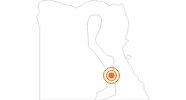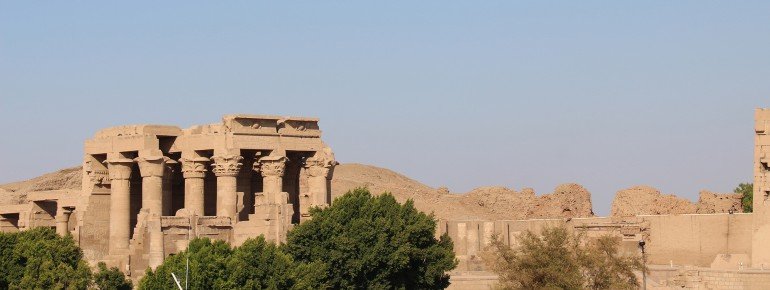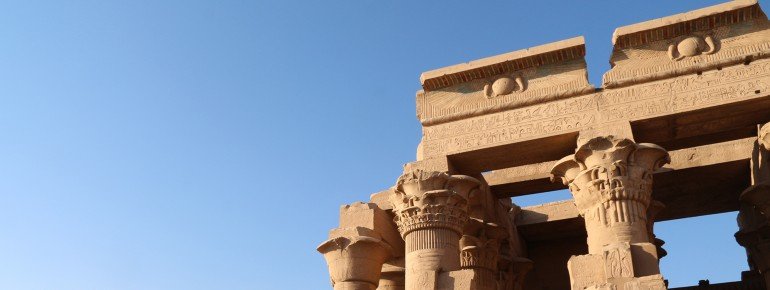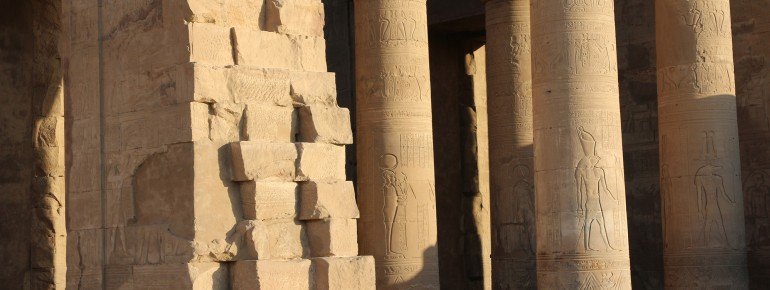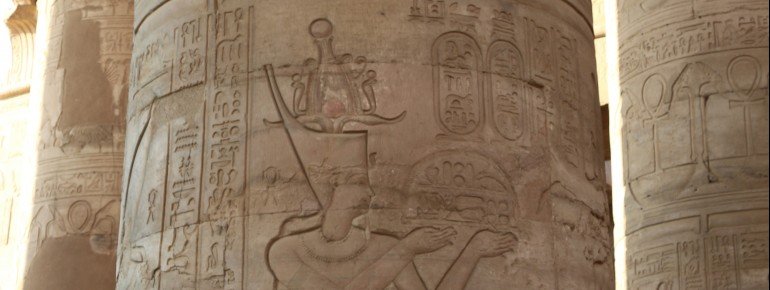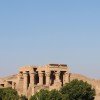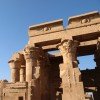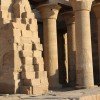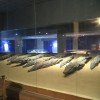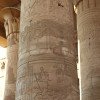Contents
Description
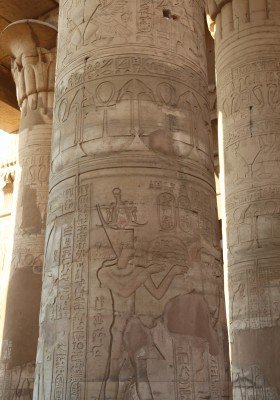
The double temple of Kom Ombo is located on the eastern bank of the Nile in Upper Egypt, between Luxor and Aswan. The ancient Egyptian complex dates from the Ptolemaic period, i.e. from 304 to 31 BC. It was dedicated to the two deities Sobek and Haroeris and is therefore referred to as a double temple. Due to the annual flooding of the Nile until the construction of the Aswan Dam and erosion of the walls, the building is now badly damaged.
Sobek and Haroeris
In contrast to most other ancient Egyptian temples, the building in Kom Ombo is dedicated to two gods at once. The area to the south-east of the main entrance was dedicated to the crocodile-headed Sobek, who was the god of water and fertility in ancient Egyptian mythology. The north-western half-temple, on the other hand, was dedicated to Haroeris, the god of light, heaven and war. He was usually depicted as a falcon-headed figure.
Structure of the temple
As is usual for ancient Egyptian temples, you first enter the building through a large pylon and then reach the first courtyard. Passing richly decorated reliefs, you enter the first portico. Continuing through the second portico, the path leads to two parallel entrances to the Holy of Holies, the area reserved for the gods themselves and the high priests.
Ancillary facilities
There is a small chapel on the right-hand side of the temple courtyard. It was added by the Roman emperor Domitian and was dedicated to the goddess Hathor. Crocodile mummies and their sarcophagi, which originated from the worship of the crocodile god Sobek, were once laid out here. These are now housed in a small museum right next to the temple.
To the northwest of the center of the temple is a so-called nilometer, a water level gauge. Markings in the round well shaft were used to determine the level of the Nile. In ancient Egypt, the water level of the river was decisive for the amount of taxes. If a high water level meant that more water was available to irrigate agricultural land, crop yields were higher. If yields were higher, Egyptian citizens could be asked to pay higher taxes.
Historical Information
Origin and function of the temple
The double temple of Kom Ombo was built between 304 and 31 BC, during the so-called Ptolemaic period. The complex was used to worship the ancient Egyptian deities Sobek, the crocodile god, and Haroeris with the falcon head.
Exposure and restoration
For a long time, the ruins of Kom Ombo were largely buried under sand. It was not until 1893 that the French Egyptologist Jacques de Morgang uncovered and restored the site. Until the 19th century, the house where Ptolemy VIII Euergetes II was born stood in front of the temple, but it was washed away during one of the Nile floods.
Tourist use
Today, the double temple of Kom Ombo is an integral part of the Nile cruises between Luxor and Aswan. The landing stage is only about 70 meters away from the temple.
Interesting facts
- Temple of Kom Ombo is the the best rated tourist attraction in Egypt.
How to get there
Tourists usually visit the temple as part of a Nile cruise. The landing stage for the boats is only about 70 meters away and the double temple is already clearly visible from the Nile. From the landing stage, a path leads directly to the temple and on to the Crocodile Museum located slightly below the temple.
